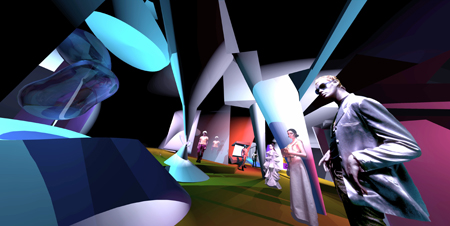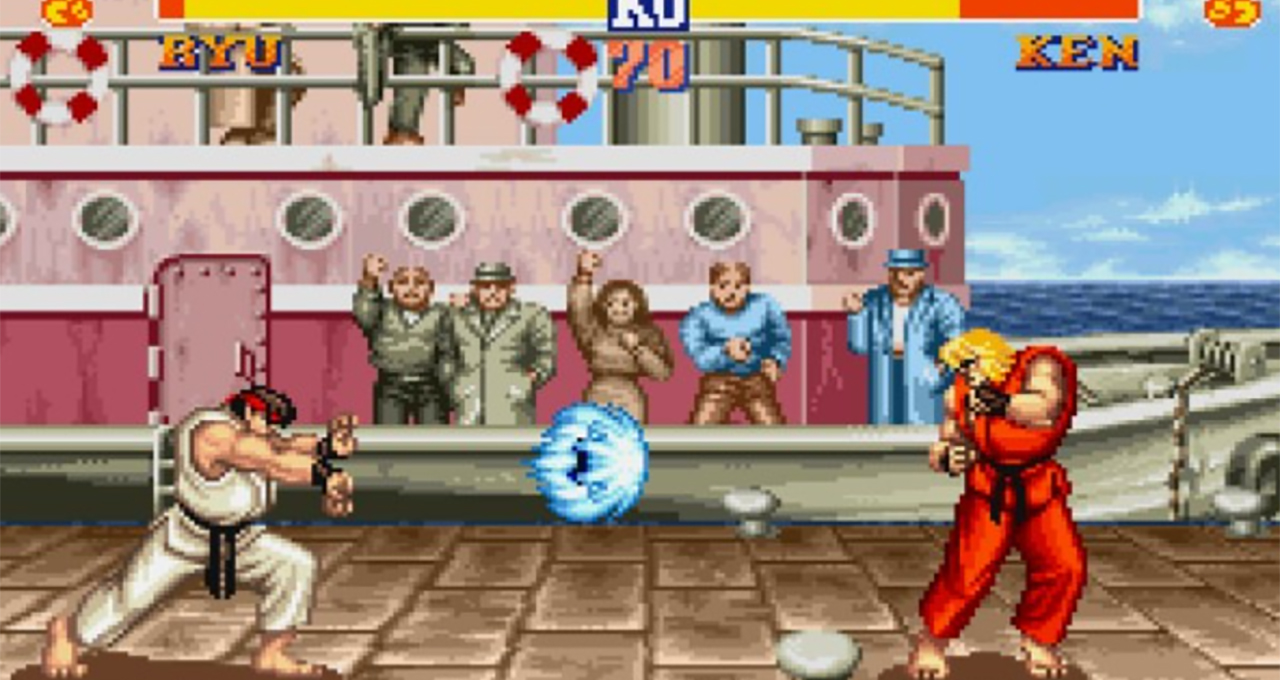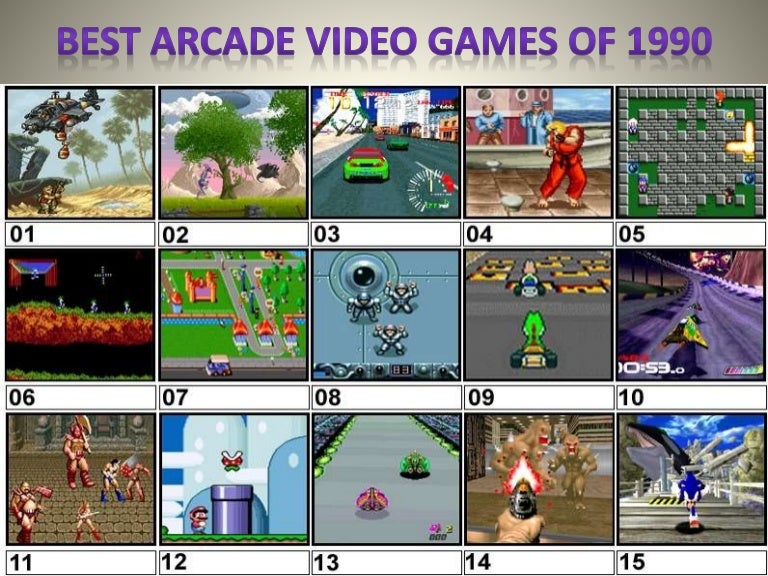A Retrospection: Classic Games of the 1990s in 2025
Related Articles: A Retrospection: Classic Games of the 1990s in 2025
Introduction
With great pleasure, we will explore the intriguing topic related to A Retrospection: Classic Games of the 1990s in 2025. Let’s weave interesting information and offer fresh perspectives to the readers.
Table of Content
A Retrospection: Classic Games of the 1990s in 2025

The year is 2025. The gaming landscape has evolved dramatically since the 1990s, with virtual reality, augmented reality, and cloud gaming taking center stage. Yet, amidst this technological advancement, a curious phenomenon has emerged: a resurgence of interest in the classic games of the 1990s. These titles, once considered relics of a bygone era, have found new life in the hearts of both seasoned gamers and a new generation eager to experience the golden age of gaming.
This renewed interest is not merely a nostalgic whim. It stems from a deeper appreciation for the enduring qualities of these games. The 1990s witnessed a period of innovation and creativity in gaming, marked by groundbreaking titles that pushed the boundaries of storytelling, gameplay mechanics, and technological capabilities. These games, often characterized by their simplicity and elegance, offer a refreshing contrast to the complex and often overwhelming nature of modern gaming.
The Genesis of a Golden Age:
The 1990s witnessed a confluence of factors that led to the emergence of the golden age of gaming. The rise of the home console, particularly the Super Nintendo Entertainment System (SNES) and the Sega Genesis, democratized gaming and brought it into the living rooms of millions. The increasing power of these consoles allowed developers to create more sophisticated graphics, sound, and gameplay mechanics, paving the way for a new generation of immersive experiences.
Pioneering Genres and Gameplay Mechanics:
The 1990s saw the birth and evolution of numerous gaming genres that continue to define the industry today. Role-playing games (RPGs) like Final Fantasy VI and Chrono Trigger revolutionized storytelling and character development, while platformers like Super Mario World and Sonic the Hedgehog 2 pushed the limits of level design and platforming mechanics. First-person shooters (FPS) like Doom and Quake introduced the world to the thrill of fast-paced action and online multiplayer, while real-time strategy (RTS) games like Command & Conquer and StarCraft offered intricate gameplay and strategic depth.
Enduring Appeal and Legacy:
The enduring appeal of these classic games can be attributed to several factors. Firstly, their simplicity and accessibility allowed players of all skill levels to enjoy them. Secondly, their compelling stories and engaging characters fostered a sense of emotional connection and immersion. Thirdly, their innovative gameplay mechanics provided hours of entertainment and replayability.
Beyond their individual merits, these games also played a crucial role in shaping the gaming industry as we know it today. They established conventions and standards that continue to influence game development even today. For instance, the narrative structure and character archetypes popularized by RPGs like Final Fantasy VI have become staples of the genre. Similarly, the fast-paced action and competitive nature of FPS games like Doom have laid the foundation for the modern esports industry.
A Renewed Appreciation:
The resurgence of interest in classic games of the 1990s can be attributed to several factors. Firstly, the rise of digital distribution platforms like Steam and GOG has made it easier than ever to access and play these games on modern computers. Secondly, the emergence of emulators has allowed gamers to experience these titles on their smartphones and tablets. Lastly, the nostalgia factor has played a significant role, with many gamers seeking to relive their childhood experiences and rediscover the joy of simpler times.
Exploring the Classics:
To fully appreciate the impact of these classic games, it is essential to delve into their specific features and innovations. Here are some noteworthy examples:
Role-Playing Games (RPGs):
- Final Fantasy VI (1994): This epic RPG is renowned for its complex story, memorable characters, and groundbreaking use of the "Active Time Battle" system.
- Chrono Trigger (1995): This time-traveling RPG features a unique blend of genres, including platforming, turn-based combat, and puzzle-solving. It is celebrated for its captivating story, intricate world, and innovative gameplay.
Platformers:
- Super Mario World (1990): This iconic platformer introduced Yoshi, a new character who became a beloved part of the Mario universe. It is renowned for its level design, innovative power-ups, and charming visuals.
- Sonic the Hedgehog 2 (1992): This sequel to the original Sonic the Hedgehog introduced new characters, levels, and gameplay mechanics, including the iconic "Spin Dash" move.
First-Person Shooters (FPS):
- Doom (1993): This groundbreaking game revolutionized the FPS genre with its fast-paced action, innovative level design, and metal soundtrack.
- Quake (1996): This game further refined the FPS formula, introducing features like online multiplayer and advanced 3D graphics.
Real-Time Strategy (RTS):
- Command & Conquer (1995): This game introduced a unique blend of real-time strategy and base-building. It is renowned for its memorable story, diverse factions, and innovative gameplay.
- StarCraft (1997): This sci-fi RTS game is considered one of the most competitive and balanced games ever made. It is renowned for its intricate gameplay, strategic depth, and highly competitive esports scene.
Beyond the Games:
The impact of these classic games extends beyond their individual merits. They have inspired countless sequels, spin-offs, and remakes, ensuring their continued relevance in the gaming world. Moreover, they have fostered a passionate community of fans who continue to create content, discuss their favorite games, and share their experiences.
Frequently Asked Questions (FAQs):
Q: Why are classic games from the 1990s experiencing a resurgence in popularity?
A: The resurgence of interest in classic games from the 1990s can be attributed to several factors, including:
- The rise of digital distribution platforms and emulators, making these games more accessible than ever.
- Nostalgia for a simpler time in gaming, when games were often characterized by their simplicity and elegance.
- The enduring appeal of these games, which offer compelling stories, engaging characters, and innovative gameplay.
Q: What are the key features that make these games classic?
A: Classic games from the 1990s are characterized by:
- Innovative gameplay mechanics that pushed the boundaries of what was possible.
- Compelling stories and engaging characters that fostered emotional connection and immersion.
- Accessibility for players of all skill levels, thanks to their simple and intuitive gameplay.
Q: How have these games influenced the gaming industry today?
A: Classic games from the 1990s have had a profound impact on the gaming industry, shaping the conventions and standards that continue to influence game development today. They introduced new genres, established gameplay mechanics, and inspired countless sequels, spin-offs, and remakes.
Q: Are these games still relevant today?
A: Absolutely. While the technology and graphics may seem dated compared to modern games, the core gameplay mechanics and stories of these classics remain timeless. They continue to offer a unique and rewarding gaming experience, appealing to both seasoned gamers and a new generation eager to discover the golden age of gaming.
Tips for Enjoying Classic Games:
- Start with the classics: Begin your journey with some of the most iconic games from the 1990s, such as Super Mario World, Sonic the Hedgehog 2, Final Fantasy VI, and Doom.
- Embrace the nostalgia: Allow yourself to be transported back to a simpler time in gaming, where the focus was on gameplay and storytelling rather than graphics and technology.
- Experiment with different genres: Explore different genres, from RPGs to platformers to FPS games, to discover the diverse range of classic titles available.
- Join a community: Connect with other fans online to discuss your favorite games, share tips, and learn about new titles.
- Don’t be afraid to try something new: Even if you’re not familiar with a particular genre, give it a try. You might be surprised at what you discover.
Conclusion:
The classic games of the 1990s stand as testaments to the enduring power of creativity and innovation in the gaming industry. They offer a unique perspective on the evolution of gaming, showcasing the ingenuity and artistic vision that defined a golden age. As we continue to push the boundaries of technology and explore new gaming experiences, it is important to remember the lessons of the past and appreciate the enduring legacy of these classic titles. They remind us that great games transcend time and continue to captivate and inspire generations of gamers.








Closure
Thus, we hope this article has provided valuable insights into A Retrospection: Classic Games of the 1990s in 2025. We thank you for taking the time to read this article. See you in our next article!